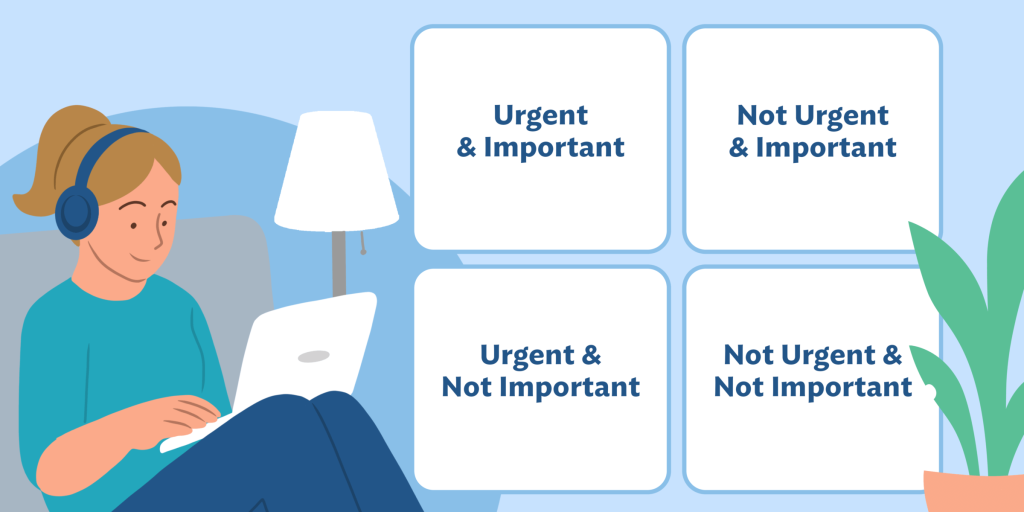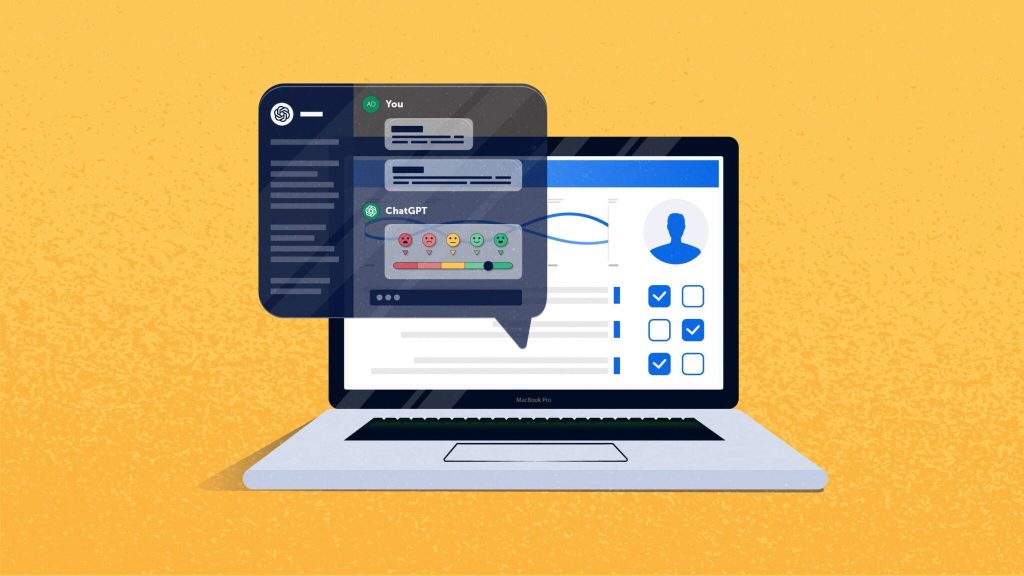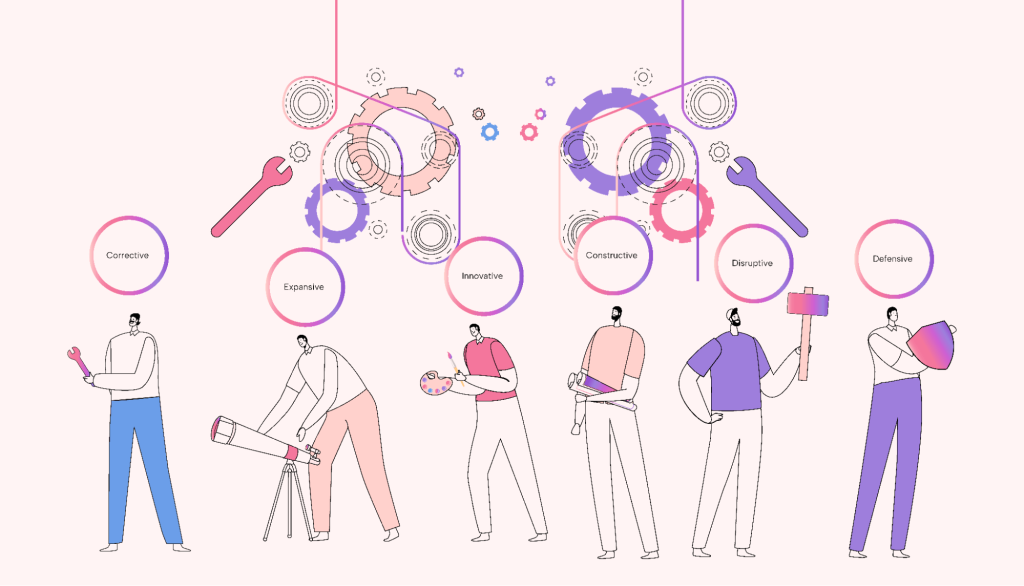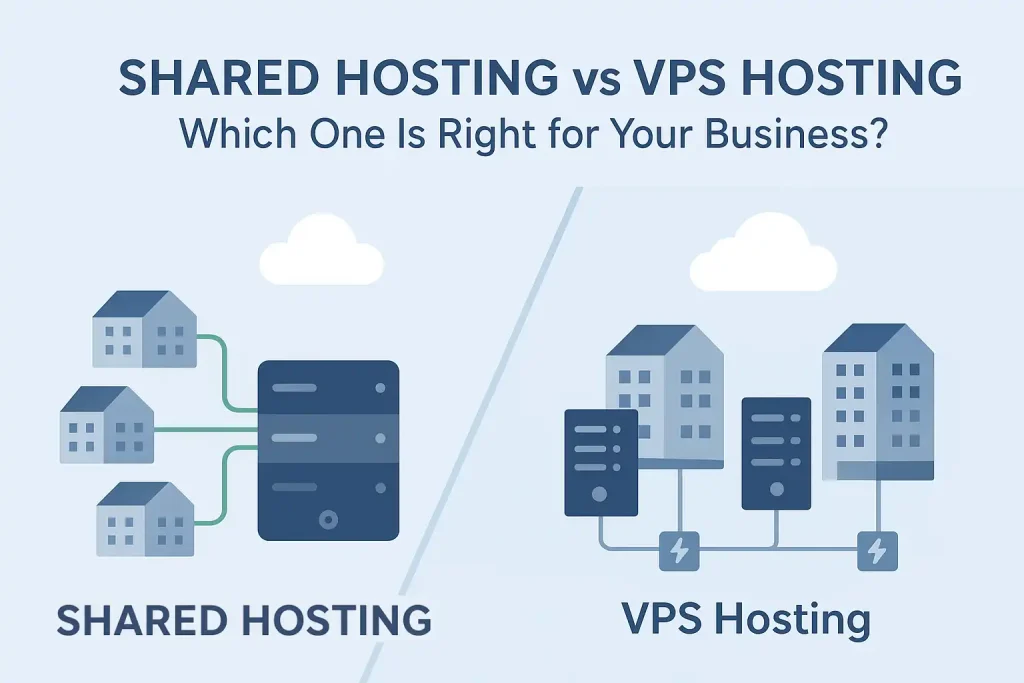In today’s fast-paced world, effective time management and task prioritization are essential for success. The Eisenhower Matrix is a powerful tool that helps individuals and organizations focus on what truly matters by categorizing tasks based on urgency and importance. Named after Dwight D. Eisenhower, the 34th President of the United States, this matrix simplifies decision-making, enabling you to tackle high-priority tasks first and avoid wasting time on less critical ones. Whether you’re managing personal responsibilities or overseeing a team, the Eisenhower Matrix provides clarity and structure, making it easier to achieve goals and boost productivity.
By adopting the Eisenhower Matrix, you can transform your approach to time management. Instead of feeling overwhelmed by a long to-do list, you can systematically identify what needs your immediate attention and what can be deferred, delegated, or even eliminated. This guide will explore how to use the Eisenhower Matrix, walk you through real-world examples, and offer best practices to maximize its effectiveness.
What is an Eisenhower Matrix?

The Eisenhower Matrix is a simple but effective tool used for task prioritization, helping individuals and teams make smarter decisions about where to focus their time and energy. The matrix is divided into four quadrants based on two key criteria: urgency and importance. The purpose of this tool is to help you quickly categorize tasks so you can deal with high-priority items and reduce the time spent on trivial tasks that don’t contribute to your goals.
Here’s how the matrix works:
Urgent vs. Important: Urgent tasks demand immediate attention, while important tasks contribute to long-term goals.
Quadrants: The matrix divides tasks into four categories (quadrants) based on whether they are urgent, important, both, or neither.
How to Use an Eisenhower Matrix
Using the Eisenhower Matrix is a straightforward process that involves evaluating your tasks based on two essential factors: urgency and importance. This approach helps you focus on what truly matters, ensuring you’re not bogged down by distractions or less important tasks. Here’s a step-by-step guide to using the Eisenhower Matrix effectively:
List All Your Tasks
Begin by writing down all the tasks you need to complete. This includes everything on your to-do list, from major projects to small daily tasks. The goal is to capture everything that requires your attention, so you have a clear overview of what’s on your plate.Categorize Each Task Based on Urgency and Importance
Next, evaluate each task and decide where it fits within the Eisenhower Matrix. The matrix consists of four quadrants, and each task should be placed in one based on two criteria:Urgency: Does the task require immediate attention?
Importance: Does the task contribute to your long-term goals, values, or mission?
Assign Tasks to the Four Quadrants
Once you’ve assessed the urgency and importance of each task, place them in one of the four quadrants:Quadrant 1 (Urgent and Important): These are tasks that require immediate action and have significant consequences if not completed. They often involve deadlines or crises. These tasks should be prioritized and tackled first.
Quadrant 2 (Non-Urgent but Important): These are long-term goals and tasks that contribute to personal or professional growth but aren’t time-sensitive. While they aren’t urgent, they are critical for success and should be scheduled for later.
Quadrant 3 (Urgent but Not Important): These tasks demand immediate attention but don’t significantly impact your long-term goals. Often, these are distractions or interruptions, like urgent emails or phone calls. You should delegate these tasks when possible or handle them quickly to get them off your list.
Quadrant 4 (Not Urgent and Not Important): These tasks don’t contribute to your goals and don’t require immediate attention. They are often time-wasters, like checking social media or engaging in trivial activities. These tasks should be eliminated or minimized.
Act on Each Quadrant Accordingly
Now that you’ve sorted your tasks, it’s time to act:Quadrant 1: Do it now. Handle urgent and important tasks immediately. These should be your top priority.
Quadrant 2: Schedule it. Plan time for these important but non-urgent tasks. Schedule them in your calendar and dedicate time to work on them consistently.
Quadrant 3: Delegate it. Whenever possible, delegate these tasks to someone else or find ways to minimize their impact on your time. They may seem urgent, but they don’t serve your long-term goals.
Quadrant 4: Eliminate it. These tasks are a waste of time and should be minimized or removed from your to-do list. If it’s not important or urgent, it doesn’t deserve your attention.
Review and Adjust Regularly
The Eisenhower Matrix isn’t a one-time exercise. Your tasks and priorities change regularly, so it’s important to review and adjust your matrix periodically. At the beginning or end of each day or week, take a moment to re-evaluate your tasks and see if any items need to be moved between quadrants. This ensures that you stay on top of your priorities and keep focusing on what truly matters.
By following these steps, you can streamline your workflow, reduce stress, and ensure that you’re focusing on the most impactful activities. Over time, using the Eisenhower Matrix will become second nature, and it will help you be more productive and organized in all areas of your life.
The 4 Eisenhower Quadrants
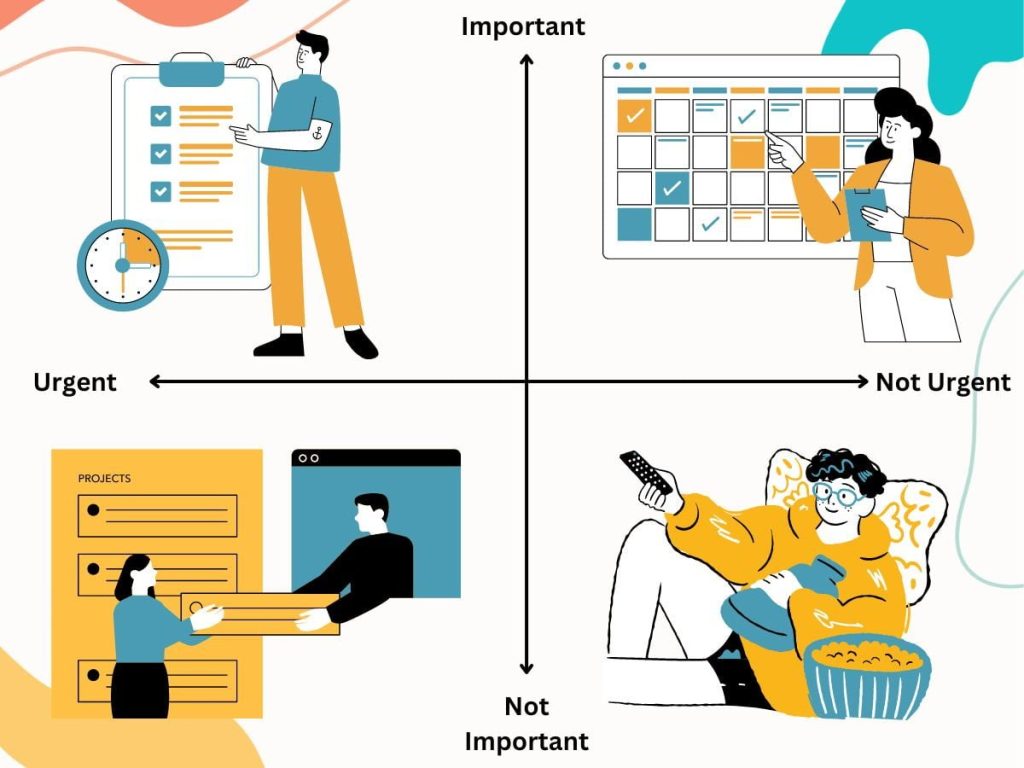
The Eisenhower Matrix is divided into four quadrants, each serving a distinct purpose in prioritizing tasks based on their urgency and importance. Understanding these quadrants helps you decide where to focus your time and which tasks need immediate attention, careful planning, or elimination altogether.
Quadrant 1: Urgent and Important Tasks
These tasks require immediate action and have significant consequences if not completed. Quadrant 1 often includes time-sensitive projects, deadlines, crises, or emergencies. They are the tasks that demand your attention right away and are typically non-negotiable. If ignored or delayed, they could negatively impact your work, relationships, or well-being.
Examples of tasks in Quadrant 1:
A project deadline that’s due today.
An urgent client issue that needs resolution.
A medical emergency.
Responding to a crisis at work or home.
How to handle Quadrant 1:
Prioritize and act quickly. Focus on these tasks first, as they are both important and time-sensitive.
Minimize distractions. While working on these tasks, avoid multitasking and stay fully focused on the task at hand.
Prepare in advance. Though these tasks are urgent, many can be mitigated by planning ahead and being proactive about potential issues.
Quadrant 2: Non-Urgent but Important Tasks
These tasks are critical for long-term success and personal growth but don’t need immediate attention. They are the tasks that contribute to your goals, values, or professional development but have no pressing deadlines. While they may not seem urgent at the moment, neglecting them can cause you to miss opportunities for improvement or growth in the future.
Examples of tasks in Quadrant 2:
Long-term strategic planning.
Working on personal development (e.g., learning a new skill, reading, or taking a course).
Building relationships with key stakeholders or clients.
Maintaining a healthy work-life balance.
Developing future business ideas or projects.
How to handle Quadrant 2:
Schedule and plan. Make time for these tasks in your calendar and prioritize them, as they are essential for long-term success.
Break them down into smaller steps. When tasks seem overwhelming, break them down into manageable actions and allocate time for them regularly.
Avoid procrastination. These tasks often get overlooked in favor of more immediate concerns, but they are crucial for long-term growth.
Quadrant 3: Urgent but Not Important Tasks
Tasks in this quadrant are time-sensitive but don’t have a significant impact on your long-term goals. These tasks may seem urgent, but they don’t contribute much to your overall success or well-being. Often, they are distractions or interruptions that require immediate attention but can be delegated or dealt with quickly to minimize their impact on your day.
Examples of tasks in Quadrant 3:
Responding to non-critical emails or phone calls.
Attending meetings that aren’t essential to your role or objectives.
Handling routine inquiries that could be addressed by someone else.
Interruptions from colleagues or family members.
How to handle Quadrant 3:
Delegate tasks. Whenever possible, delegate these tasks to others who can handle them, freeing you up to focus on more important work.
Minimize time spent. If you must deal with these tasks yourself, try to complete them quickly without getting bogged down in unnecessary details.
Set boundaries. Protect your time from constant interruptions and distractions by establishing clear boundaries with colleagues or family members.
Quadrant 4: Not Urgent and Not Important Tasks
These tasks neither contribute to your long-term goals nor require immediate attention. They are the least valuable tasks on your to-do list and often serve as time-wasters. While these tasks may provide momentary distractions or entertainment, they don’t bring any real benefit to your personal or professional life.
Examples of tasks in Quadrant 4:
Mindlessly scrolling through social media.
Watching TV shows or videos with no educational value.
Engaging in trivial or irrelevant conversations.
Over-checking emails or constantly checking for updates on news or gossip.
How to handle Quadrant 4:
Eliminate or minimize. These tasks should be either eliminated or reduced significantly. If they must be done, set strict time limits and do them at designated moments to avoid them taking up unnecessary space in your day.
Assess their value. Regularly evaluate the value of tasks in this quadrant to ensure you’re not wasting time on things that don’t align with your goals.
Replace with better activities. Use the time spent on Quadrant 4 activities to engage in more productive and fulfilling tasks from Quadrants 1 and 2.
Practical Eisenhower Matrix Examples to Give You a Better Picture

The best way to understand the value of the Eisenhower Matrix is by applying it to real-life scenarios. Below are some practical examples that demonstrate how to use the matrix in various contexts: project management, personal productivity, and team collaboration.
Example 1: Project Management
In project management, the Eisenhower Matrix helps you prioritize tasks, meet deadlines, and ensure that critical activities get the attention they deserve. Here’s how it could look:
Quadrant 1 (Urgent and Important):
Fixing a critical bug in the project’s software that could delay the launch.
Delivering a proposal that’s due today for a potential client.
Resolving a major project roadblock that’s impacting the team’s progress.
Quadrant 2 (Non-Urgent but Important):
Planning for upcoming milestones or sprints.
Long-term project strategy, like research and development for future phases.
Building relationships with stakeholders to ensure future project support.
Quadrant 3 (Urgent but Not Important):
Responding to an email asking for meeting details or logistics.
Attending a non-essential status update meeting.
Handling minor issues or inquiries that could be delegated to junior team members.
Quadrant 4 (Not Urgent and Not Important):
Checking irrelevant emails that don’t affect the project.
Engaging in unnecessary administrative tasks, like reorganizing files that are already well-organized.
Spending excessive time on minor tasks that do not impact the project’s progress or deadlines.
By applying the Eisenhower Matrix, project managers can stay focused on what truly drives the project forward and delegate or minimize the rest.
Example 2: Personal Productivity
When it comes to personal productivity, the Eisenhower Matrix can help you better allocate your time to activities that contribute to your well-being and personal goals. Here’s an example:
Quadrant 1 (Urgent and Important):
Paying bills that are due today to avoid late fees.
Attending to an urgent health issue, such as seeing a doctor for an unexpected illness.
Completing an assignment for work or school with a tight deadline.
Quadrant 2 (Non-Urgent but Important):
Exercising or working on your physical health.
Studying or reading to improve your skills or knowledge.
Planning your week ahead, setting personal goals, and organizing your calendar.
Quadrant 3 (Urgent but Not Important):
Responding to a friend’s casual invitation for coffee when you have other priorities.
Dealing with a minor issue, like fixing a broken appliance that doesn’t immediately impact your day.
Taking a phone call that could have been postponed or handled later.
Quadrant 4 (Not Urgent and Not Important):
Browsing social media without a specific purpose.
Watching TV shows that don’t add value to your personal growth or entertainment.
Engaging in long online chats or browsing the internet aimlessly.
By applying the matrix to personal productivity, you can focus more on long-term goals (Quadrant 2), reducing the time spent on distractions (Quadrant 4) and minor tasks (Quadrant 3).
Example 3: Team Collaboration
For team collaboration, the Eisenhower Matrix ensures that all team members focus on the most pressing tasks that contribute to team goals. Here’s how it might be used:
Quadrant 1 (Urgent and Important):
Addressing an urgent client request or issue that affects the team’s performance.
Completing a critical team task that’s blocking other team members’ progress.
Fixing a major bug in the product that’s preventing launch or causing user problems.
Quadrant 2 (Non-Urgent but Important):
Team brainstorming sessions to improve workflow or innovation.
Conducting training sessions to enhance team skills and performance.
Developing long-term strategies for project growth or client relations.
Quadrant 3 (Urgent but Not Important):
Attending meetings that aren’t relevant to your team’s current objectives.
Responding to emails or requests from other teams that are not directly related to your own team’s work.
Handling minor technical support inquiries that could be handled by a different department.
Quadrant 4 (Not Urgent and Not Important):
Team members spending time on activities outside the project scope, like personal social media.
Engaging in long, unnecessary conversations that don’t contribute to the project’s goals.
Updating documents or files that don’t need immediate attention or change.
By using the Eisenhower Matrix, teams can eliminate unnecessary distractions and ensure that time and resources are dedicated to important tasks, keeping everyone aligned and productive.
5 Simple Eisenhower Matrix Best Practices to Follow
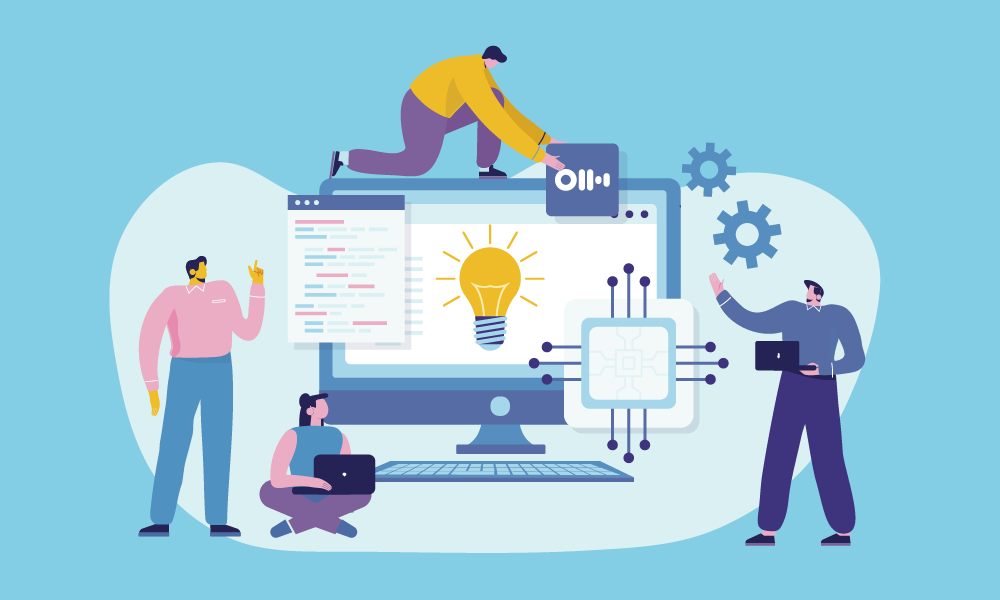
To get the most out of the Eisenhower Matrix and make it an effective tool for task prioritization, following a few best practices is key. These strategies will help you stay organized, avoid overwhelm, and make smarter decisions about how to allocate your time and energy.
1. Be Honest with Yourself
One of the most important aspects of using the Eisenhower Matrix effectively is being honest about the urgency and importance of your tasks. It’s easy to fall into the trap of thinking certain tasks are more important or urgent than they actually are.
How to apply this best practice:
Be objective when categorizing tasks. Don’t overestimate the urgency of tasks that can wait or underestimate the importance of long-term goals.
Regularly challenge yourself to question whether something is truly urgent or just a distraction.
Recognize tasks that can easily be delegated, postponed, or eliminated.
Being honest with yourself ensures you don’t waste time on low-priority tasks that seem urgent, allowing you to focus on what really matters.
2. Keep It Simple
The Eisenhower Matrix is designed to simplify your task management process, so don’t overcomplicate it. Keep the system straightforward and easy to use. If you try to categorize every tiny task, you might end up overthinking your list and losing focus on your main priorities.
How to apply this best practice:
Limit your list to key tasks that really matter. Don’t try to break down every little action.
Stick to the basic four quadrants. You don’t need subcategories or additional classifications—just focus on urgency and importance.
Avoid multi-tasking. Each task should fall neatly into one of the quadrants without needing extra layers of complexity.
By keeping it simple, you reduce mental clutter and improve your ability to stay focused on what’s important.
3. Regularly Review and Update
The tasks on your to-do list are constantly changing, and so should your priorities. Regularly reviewing and updating your Eisenhower Matrix ensures it remains aligned with your goals, deadlines, and evolving responsibilities.
How to apply this best practice:
Set aside time at the end of each day or week to reassess your tasks and priorities.
Move tasks between quadrants as needed based on changes in urgency or importance.
Reflect on completed tasks and evaluate whether any new tasks need to be added.
Frequent updates allow you to stay agile and adapt to shifting priorities, ensuring you don’t miss important deadlines or neglect long-term goals.
4. Delegate Tasks When Possible
Not everything on your to-do list needs to be done by you. Many tasks in Quadrant 3 (Urgent but Not Important) and even some in Quadrant 1 can be delegated to others, freeing up your time for more impactful activities.
How to apply this best practice:
Identify tasks that others can handle and delegate them accordingly.
Empower team members or colleagues by giving them responsibilities that align with their strengths.
Trust others to take care of less critical tasks, so you can focus on high-priority items in Quadrant 1 and 2.
Delegating tasks not only lightens your load but also helps develop the skills of those around you, fostering better teamwork and productivity.
5. Limit Tasks in Quadrant 4
Quadrant 4 tasks (Not Urgent and Not Important) can be the biggest time-wasters if not managed properly. While some downtime is important for maintaining mental health, spending too much time on non-essential tasks can drain your productivity.
How to apply this best practice:
Set strict time limits on Quadrant 4 activities, and keep them to a minimum.
Identify patterns in your time-wasting habits and actively work to reduce them.
Use the time freed up by eliminating Quadrant 4 tasks to focus on Quadrants 1 and 2, where you’ll see the most significant impact.
By limiting time spent in Quadrant 4, you can free up more energy for tasks that contribute to your goals and long-term success.
The Best Task Management Tool to Build Your Eisenhower Matrix
When it comes to implementing the Eisenhower Matrix and managing your tasks effectively, using the right task management tool can make all the difference. Corexta is one of the best tools available for organizing your tasks, streamlining workflows, and making it easier to prioritize your work based on urgency and importance.
Corexta provides a powerful platform that integrates task management with real-time collaboration, making it a perfect fit for individuals and teams who need to prioritize tasks efficiently. With its intuitive interface and customizable features, Corexta allows you to build and manage your Eisenhower Matrix, ensuring you stay focused on what matters most.
Here’s how Corexta can help you build your Eisenhower Matrix:
Task Categorization: Corexta allows you to easily categorize your tasks into the four quadrants of the Eisenhower Matrix. You can label tasks as urgent, important, or both, and assign deadlines, ensuring you’re always on track with your priorities.
Customizable Views: Whether you prefer a Kanban board, list view, or calendar, Corexta offers various ways to visualize your tasks. This flexibility lets you organize and update your Eisenhower Matrix in a way that works best for your workflow.
Collaboration and Delegation: Corexta’s team collaboration features make it easy to delegate tasks to others. This helps you manage Quadrant 3 tasks (Urgent but Not Important) by assigning them to team members, allowing you to focus on more critical tasks.
Real-time Updates: With real-time syncing, you’ll always be up-to-date with any changes made to your task list, whether you’re working alone or collaborating with others. This ensures your Eisenhower Matrix reflects the most current priorities at all times.
Task Reminders and Notifications: Stay on top of urgent tasks with customizable reminders and notifications. Corexta ensures you don’t miss important deadlines or overlook urgent tasks by sending you timely alerts.
Ready to boost your productivity and get the most out of the Eisenhower Matrix? Get Started with Corexta Now! and experience a smarter way to prioritize and manage your tasks. With its user-friendly design and powerful features, Corexta is the ultimate tool to help you stay organized and focused.

